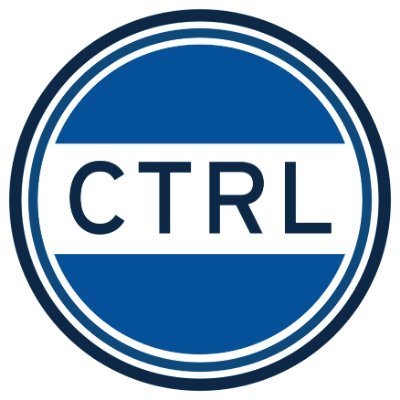Outcome-Centered Low-Stakes Assessments:
From Assessing Completion to Assessing Learning
By Tabitha Kidwell
Like many faculty, I include both low-stakes and high-stakes assessments in my courses.
- Low-stakes assessments include quizzes, class discussions, reflections, and drafts. These assessments are worth few or no points, and have little impact on the final grade.
- High-stakes assessments include exams, final papers, and projects. These assessments have a major impact on the final grade.
(For more details about assessment types, see the Further Reading section).
Because students’ grades are based largely on high stakes assignments, it’s essential that they be aligned to course learning outcomes. I typically put a lot of effort into developing quality high-stakes assessments, so that students’ final grades reflect their achievement of the learning outcomes.
Recently, however, several CTRL workshops (see the Further Reading section) prompted me to reflect on my assessment practices overall. This reflection helped me notice that several of my low-stakes assessments were not well aligned with the course learning outcomes. That misalignment meant I was missing opportunities to gather evidence about students’ progress.
In this article, I’ll discuss the assessment practices I use in Language, Education, and Equity, which fulfills the AU Core Diversity and Equity (DIV) requirement. My examples will relate to the course’s second learning outcome:
Learning Outcome 2: Examine how legacies or experiences of oppression and responses to them shape contemporary realities or conditions.
Below, I refer to this outcome as “LO2.” I’ll describe two low-stakes assessments from this course and will share how I adapted my approach to these assessments to offer clearer evidence of student learning.
k
Discussion Boards: Using Additional Assessment Tools
Discussion boards are a low-stakes assessment tool I use in almost all my classes. Some semesters, I assign reading response boards due before class, and other times I have students post after class to reconnect with the class content.
Either way, I had always graded discussion boards on completion: two points for an initial post of seven or more sentences, and one point for a comment on a classmate’s post. I would read over the responses and would sometimes share especially insightful responses in the next class session, but otherwise wouldn’t do much with students’ responses.
After reflecting on this practice, I realized that I was missing an opportunity by not intentionally looking for evidence of learning in students’ responses. In response, I developed two assessment tools to better track evidence of student learning and offer them feedback on their progress.
Learning Outcome Checklist
The first tool is a simple checklist, with students’ names along the left side, and the course learning outcomes along the top. As I review discussion board posts, I make a note when a student’s comment shows strong evidence of the various learning outcomes.
This format allows me to see student progress over time, and also see how the class as a whole is doing with each outcome. If I see that many students are struggling with a certain learning outcome, I can adjust my instruction to focus more on that outcome.
The same checklist format could be used to track evidence of student learning in other low-stakes assessments, like class discussions or response journals.
Feedback Templates
The second tool is feedback templates, which are basically comments that can be cut and pasted with minor edits to offer student feedback. For example, a feedback template related to LO2 could be:
Your comment about X showed ways that legacies of oppression shape the contemporary realities of this group.
If a student has an insightful comment about how the experiences of native Americans in residential schools contributed to the need for language revitalization efforts today, I could edit that template to offer the following feedback:
Your comment about residential schools showed ways that that legacies of oppression shape the contemporary realities of many native Americans.
This feedback helps students be more aware of their progress in relation to the course learning outcomes. I have found it fairly easy to use feedback templates alongside the checklist: when I notice evidence of student learning related to an outcome, I mark it on the checklist, then use the feedback template to give the student targeted feedback.
Media Brief Presentation: Aligning Grading Criteria with Outcomes
An additional low-stakes assessment I have used in Language, Education, and Equity is the Media Brief presentation.
In this assignment, students summarize and lead class discussion about a recent media item related to the themes of the course.
The original grading criteria (Table 1) assessed students based on whether they had followed the assignment directions. Basically, if students included the required elements, they received full credit.
Table 1: Original Grading Criteria for Media Brief Presentation
| Criteria | Points |
| Presentation Topic and Source Content
Topic connects to linguistic diversity, equity, or discrimination. Source content is from a reputable source and dates from the past 24 months. |
3 pts |
| Overview of Topic & Content
Presentation includes a 2-5 minute overview of the content of the text/media, and explains the context and implications of the content in more detail (if applicable). |
3 pts |
| Facilitation of Class Engagement
Presentation includes at least 3 minutes of discussion or interactive exploration of the issues addressed. |
4 pts |
I had been dissatisfied with this assignment because students would often meet the requirements, but avoid deep engagement with issues of linguistic and educational equity.
For example, one student presented a Buzzfeed article about slang terms originating in African American English. The topic clearly connected to issues of linguistic diversity, but didn’t engage with these issues on a substantive level or explore related issues of inequity and appropriation.
When I returned to my course proposal, I saw that I had initially proposed this assignment as an assessment of LO2. My original intention had been for students to share a current event that shows how legacies of oppression were continuing to impact marginalized linguistic groups.
To make this outcome more central, I included it throughout the new grading criteria (Table 2) so students are directly prompted to discuss how historical oppression has shaped the contemporary experiences of a marginalized linguistic group.
Table 2: New Grading Criteria for Media Brief Presentation
| Criteria | Points |
| Selection of Media Item
Media item offers evidence of ways historical oppression has shaped the contemporary experiences of a marginalized linguistic group. Source content is from a reputable source and dates from the past 24 months. |
3 pts |
| Overview of Topic & Content
Presentation includes a 2-5 minute overview of the content of the text/media which discusses how historical oppression has shaped the contemporary experiences of a marginalized linguistic group. |
3 pts |
| Facilitation of Class Engagement
Presentation includes at least 3 minutes of discussion or interactive exploration of how historical oppression has shaped the contemporary experiences of a marginalized linguistic group. |
4 pts |
By adding this language to the criteria, I am making my expectations for students clearer. When I use the new criteria next semester, this assignment will more closely assess students’ achievement of LO2 and will offer clearer evidence of students’ learning.
k
Final Thoughts
In conclusion, reflection on my low-stakes assessment practices led me to develop additional assessment tools (a checklist and feedback templates) for discussion boards, and to revise the media brief presentation to better align with the desired learning outcome.
By sharing the examples above, I hope to offer a model other faculty members could follow to adapt their low-stakes assessments to better match the learning outcomes in their courses.
Author Profile
Tabitha Kidwell is a Professorial Lecturer in the TESOL Program, where she teaches academic writing, applied linguistics, and teaching methods courses. She is a CTRL AU Core Faculty Fellow for 2022-2023. Her scholarship and service focus on teacher development and innovative teaching methods.
Suggestions for Further Reading
Barkley. E. F. & Major, C. H. (2016). Learning assessment techniques: A handbook for college faculty. Jossey-Bass.
Jardine, H. & Crite, M. (2022, October) Fair and efficient grading: Using feedback and rubrics to promote student learning. Center for Teaching, Research, and Learning Workshop Series, American University. Available at: https://youtu.be/2V-OOJTwln4


